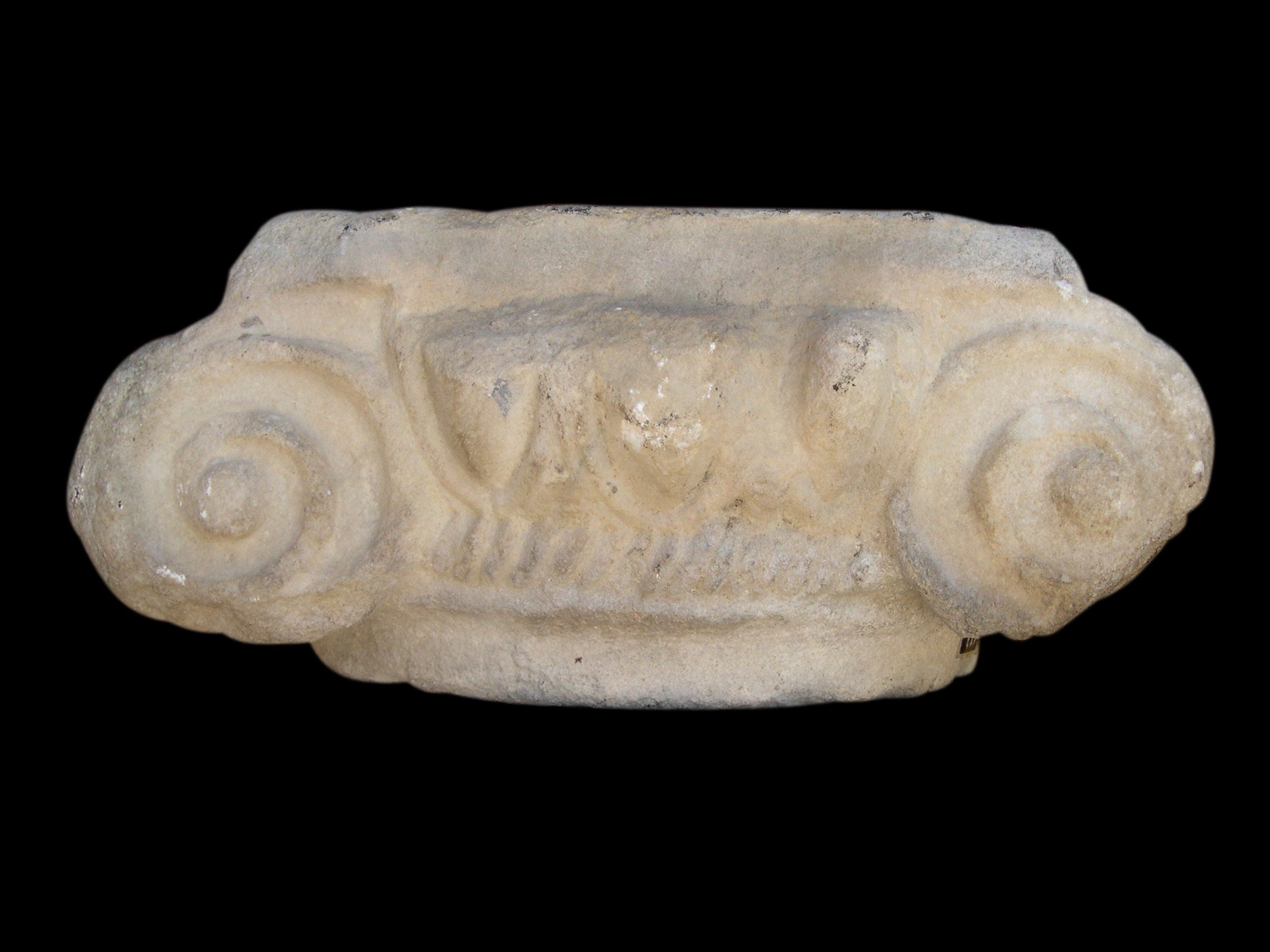Ionic column capital
Ionic column capital with a pair of volutes made of a slightly concave strip, with thick projecting margin, ending in a circular eye; the channel of the volutes has such limited height that it is virtually non existing, and its upper border does not extend under the abacus but it ends abruptly in correspondence of the echinus. The latter, fairly projecting, is carved with three large pointed eggs, superiorly cut and held in flat casings which are not well separated from one another; the intercalary motif is here a large dart of which only the point is visible. The lateral half-palmettes are here absent, while the lower margin of the echinus is emphasized by a thick astragal cut with a twisted rope decor and a fillet. Over the sides, the volutes are connected by a cylindrical polster decorated by two superimposed crowns of water leaves, with pointed shape, which, on the outer crown, are linked at the base by means of a continuous frame in the form of a thick astragal, and which show a central rib marked by a deep incision with bifurcated ends. At the centre, the two crowns are joined at the base with a narrowing again marked by a deeply incised line, thus creating the so called pseudo-baltheus motif. The capital shows a rather coarse handling, especially over the front, and its being worked only with cutting tools, without the aid of the drill, causes it to be completely devoid of any chiaroscuro effect. The astragal carved with a twisted rope motif, which is of African origin, makes its appearance on the capitals worked in Rome after the end of the III century AD, amongst which the most famous examples are the four-faced Ionic capitals sculpted for the IV century restoration of the Temple of Saturn in the Roman Forum. Comparisons can also be made with a capital in Naples, private collection, dated to the IV century and with the posterior series of capitals in the central ring of St. Stephen in the Round. Together with an exemplar in the Church of S. Maria Antiqua in the Roman Forum, the previous capitals also furnish us with a comparison for the water leaves on the polster which, as on our piece, feature a continuous frame in the form of a thick astragal. Such treatment, aimed at amplifying the decorative effect to the detriment of organc unity, appears at the beginning of the IV century and, in the East, lasts throughout the whole Late Antique and Byzantine period. On the contrary, the so called pseudo-baltheus motif is fairly rare, being found only on an erratic II century capital in the Asklepeion of Aphrodisias, on a III century one from Didyma and on another one, now in Side Museum, dated between the end of the III and the beginning of the IV century AD which also features the twisted rope decor. Lastly, the treatment of the echinus, with eggs reduced in number and no half-palmettes, is typical of the late production and therefore paralleled by a large quantity of exemplars. Considering the comparisons discussed and the stylistic characteristics, our capital is datable to the IV century AD.







